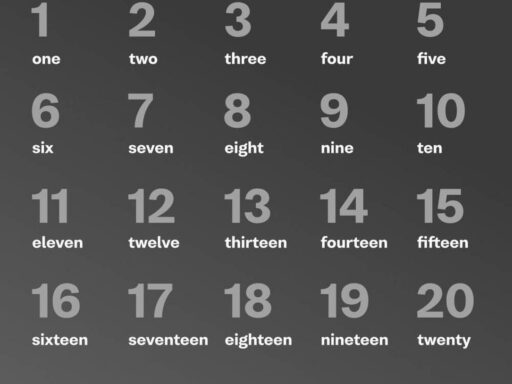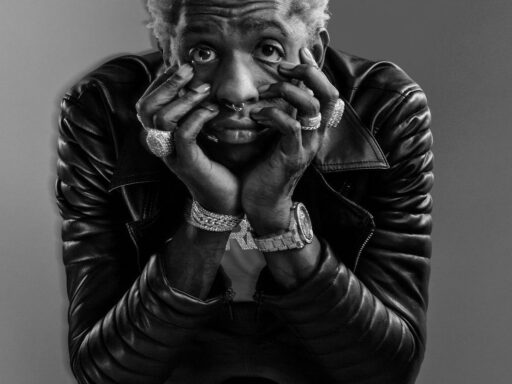The so-called Roman salute lacks direct historical sources from Ancient Rome and instead emerges from neoclassical art and later political symbolism. No surviving Roman texts or artworks accurately depict the straight-arm, palm-down salute linked to Rome. Instead, gestures like raised hands with fingers splayed appear on monuments such as Trajan’s Column, while other statues, often cited as examples, do not support the existence of this salute in Roman practice.
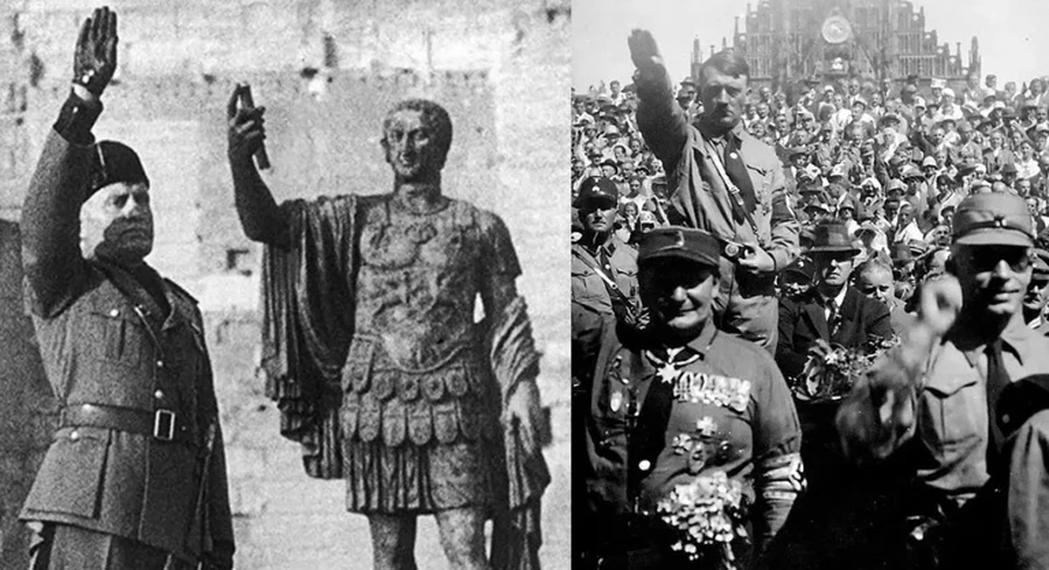
The famous Augustus of Prima Porta statue is frequently misinterpreted. Its raised arm is a non-original restoration, originally holding a spear. Similarly, the Equestrian Statue of Marcus Aurelius features a gesture seen as a blessing rather than a salute. These cases show how modern eyes, including those during the Fascist era, might project meanings onto ancient art that do not align with historical reality.
The key source of what is now called the Roman salute is neoclassical art, specifically Jacques-Louis David’s Oath of the Horatii (1784). This painting features men swearing an oath with straight arms, fingers together, and palms downward. This image powerfully conveys loyalty and unity but is a creative invention of David, not a resurrection of authentic Roman custom. Critics of David’s time praised this “new” gesture because it diverged from traditional Roman oath scenes and offered an evocative dramatic statement.
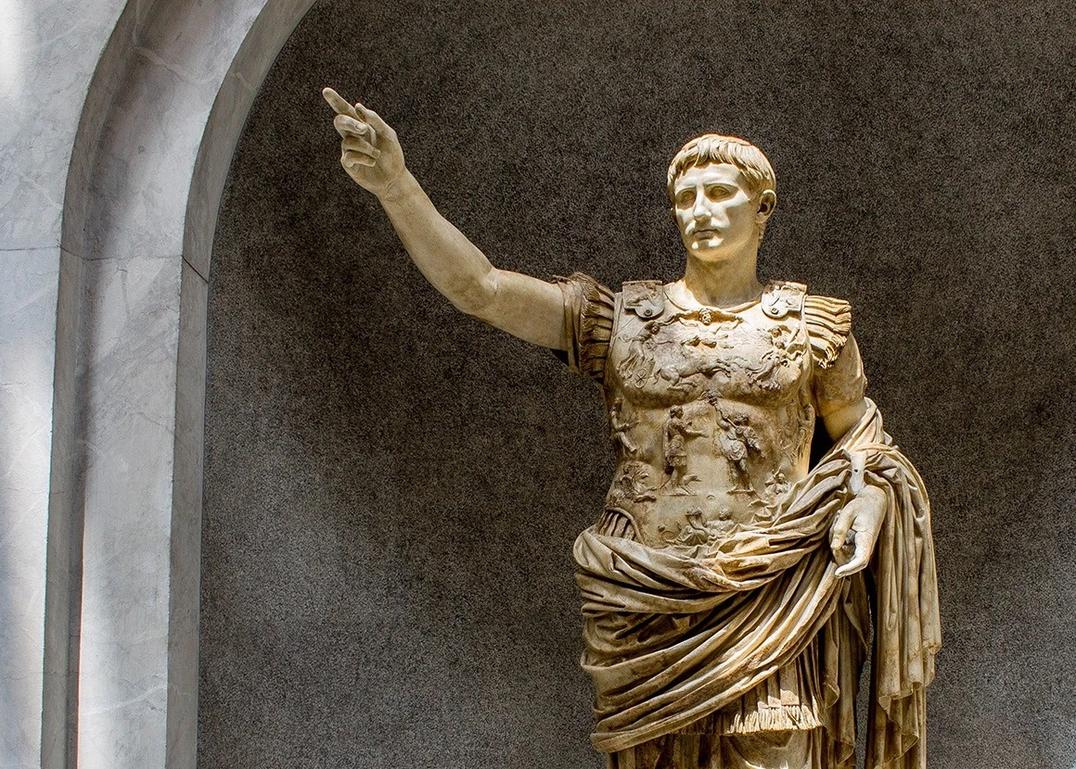
David reused this distinctive body language in other works, such as The Tennis Court Oath, linking ancient and modern ideals. The impact of David’s imagery extended beyond art and influenced nationalist and imperial symbolism, especially during Napoleonic France. For instance, in The Distribution of the Eagle Standards (1810), the oath gesture shifts to signify imperial loyalty under Napoleon, moving away from Republican roots towards authoritarian nationalism.
This neoclassical gesture later achieved a strong association with Roman symbolism during the early 20th century. Fascist Italy under Mussolini, who sought to revive Roman grandeur, adopted and popularized the salute as a sign of allegiance and national pride. The salute was possibly introduced into fascist culture by Gabriele D’Annunzio, a proto-Fascist figure who used it during his 1919 occupation of Fiume. The salute thus became a political symbol rather than a genuine ancient Roman sign.
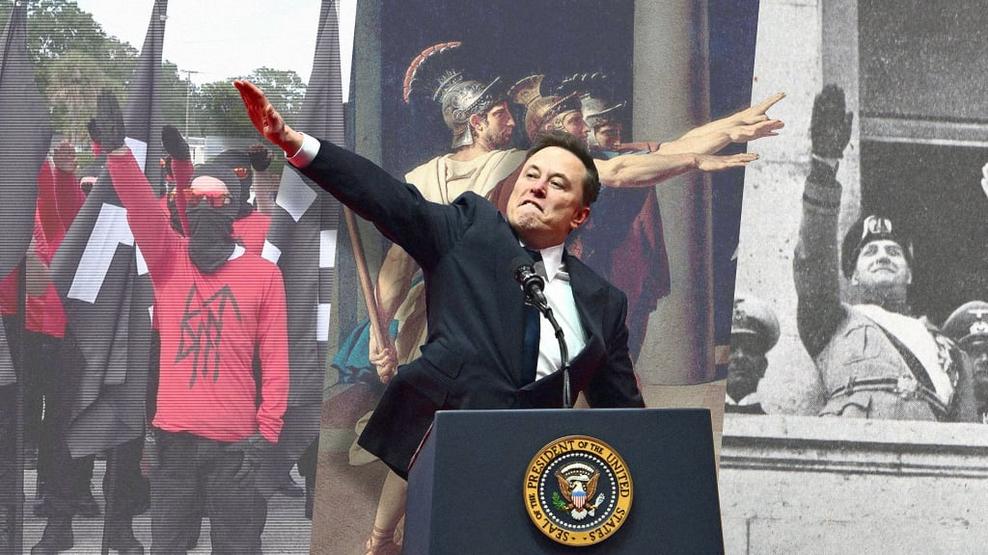
| Aspect | Description |
|---|---|
| Roman Sources | No depiction of the straight-arm salute with palm down; existing gestures differ in form. |
| Misinterpreted Statues | Augustus of Prima Porta’s raised arm was restored holding a spear; Marcus Aurelius’ gesture is a benediction. |
| Neoclassical Origin | Jacques-Louis David’s “Oath of the Horatii” invents the straight-arm salute as a dramatic symbol. |
| Political Adaptation | Napoleon’s era expanded the gesture’s meaning toward imperial loyalty and authoritarian power. |
| Fascist Use | Mussolini adopted the salute, influenced by D’Annunzio, to promote Italian nationalism via Roman imagery. |
The evolution of the salute reflects changing political climates rather than antiquity. Though it evokes Roman themes, it is primarily a modern construction used for symbolic effect. The salute symbolizes loyalty and unity but is not a verified Roman practice.
- The “Roman salute” has no documented origin in actual Roman customs or art.
- Key ancient statues are misread or altered, leading to mistaken assumptions.
- Jacques-Louis David’s neoclassical painting introduced the gesture as an artistic invention.
- Napoleonic France transformed the salute into an imperial and nationalist symbol.
- 20th-century fascist regimes adopted the salute as a political emblem linked to Roman revivalism.
Are There Any Historical Sources About the Roman Salute or Was It Just a Piece of Neoclassical Iconography?
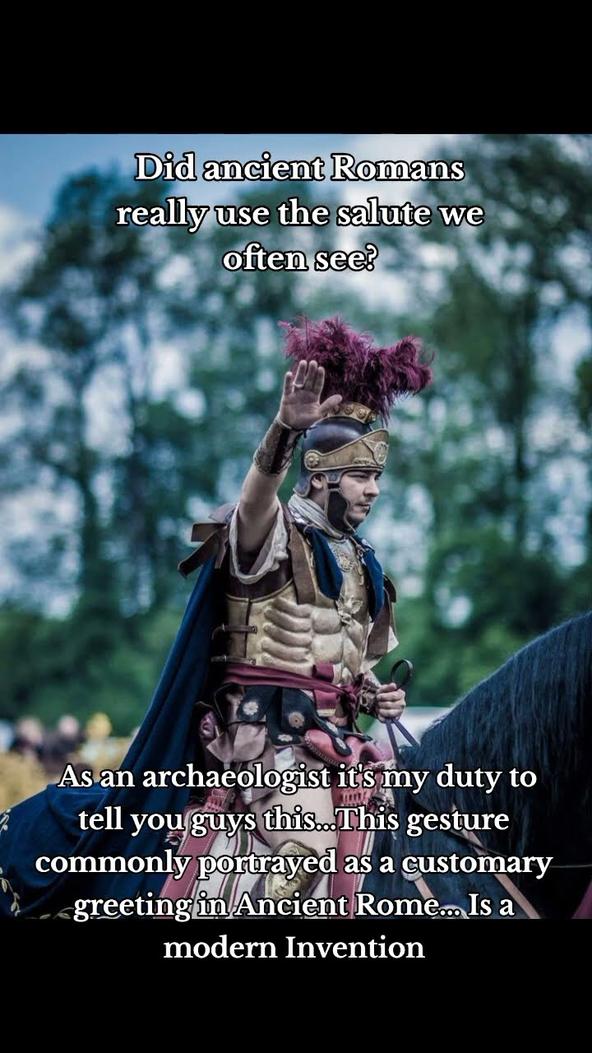
Short answer? There are NO genuine ancient Roman sources describing the so-called “Roman salute” as we know it today. So, the gesture most people link to Rome, fascism, and the dramatic raised arm sidesteps documented history and lands squarely in the realm of art and 20th-century political theater.
Let’s unravel this fascinating mix of myth, art, ideology, and propaganda. Ready for a little history-meets-art-meets-politics eye-opener?
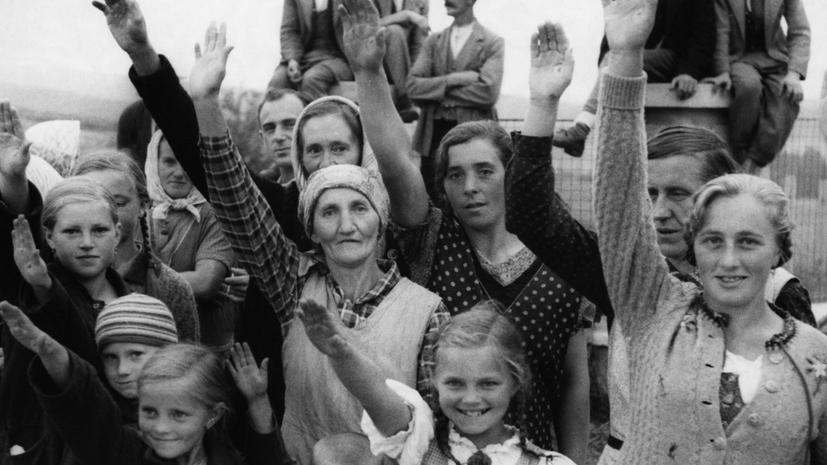
From Rome to Fascism: The Adoption of the Salute
The infamous salute recognized today, especially linked to Nazi Germany, was actually adapted from the Italian Fascist salute under Mussolini. This was not an ancient Roman custom but a modern gesture appropriated by fascist movements in the 1920s and 1930s. The Spanish Falangists also borrowed this salute, inspired by the “Ur-Fascist” Italian model.
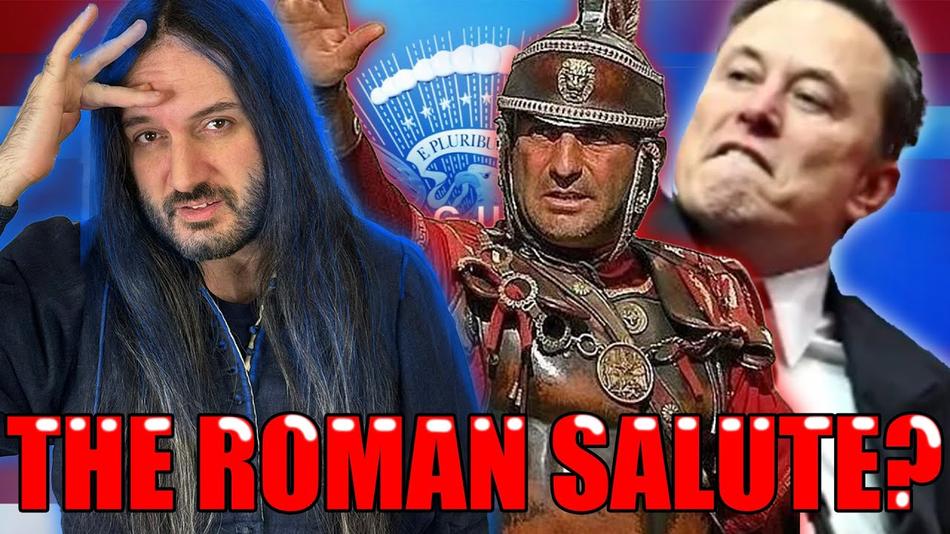
Mussolini’s regime was obsessed with reviving the grandeur of Ancient Rome. By adopting Roman symbols like the fasces—a bundle of rods bound around an axe, signifying power and authority—the Fascist Party aimed to forge a powerful political identity. The salute became part of this neo-Roman imagery. But did Mussolini just pull it out of ancient history? Not quite.
The Myth of the Roman Salute: What Ancient Sources Say
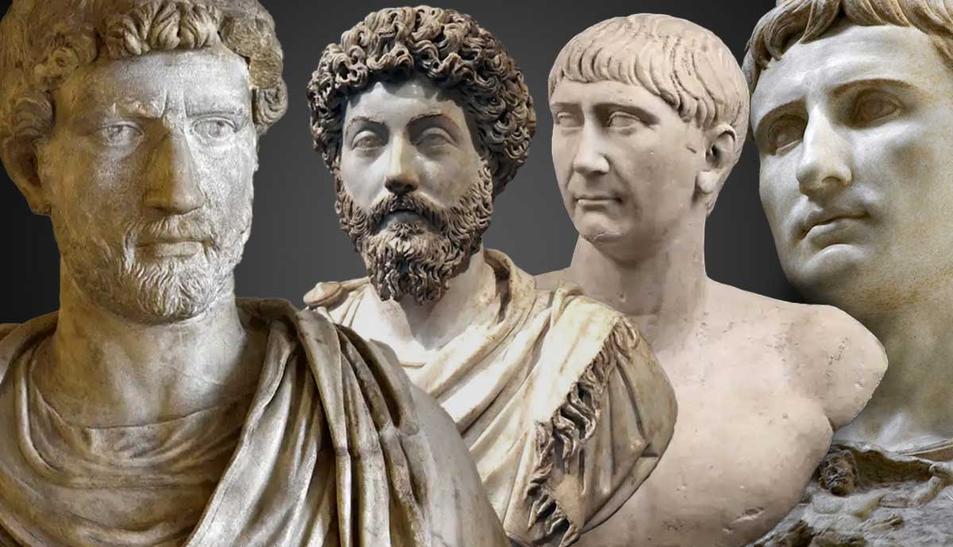
Despite its name, the “Roman salute” as a specific gesture with the arm fully extended, fingers together, palm down, has no basis in historical Roman sources. No textual records, artworks, or archaeological materials depict such a salute used by Romans.
That’s right—artifacts like Trajan’s Column show salutes and gestures. But Roman salutes tended to involve raised hands with fingers splayed, quite unlike the sleek fascist salute we’re used to seeing. Even iconic statues often misinterpreted as making the Roman salute don’t hold up under scrutiny.
Take the renowned Augustus of Prima Porta. Some suggest the raised arm mimics the salute, but in reality, the arm itself is a later restoration and held a spear initially. The well-known Equestrian Statue of Marcus Aurelius does feature a raised hand but it is a gesture of blessing or benediction, not a salute.
Neoclassical Art: The Real Origin of the Gesture
So, where did the modern “Roman salute” come from? The credit (or blame!) goes to the 18th-century neoclassical painter Jacques-Louis David.
His famous painting Oath of the Horatii depicts an oath-taking scene with the striking straight-armed salute, fingers together, palm down. This gesture did not come from authentic Roman practice but was David’s artistic invention, designed to evoke power, loyalty, and solemnity. It was aesthetically powerful and broke with the traditional portrayal of antique oath scenes.
David himself repeated this gesture in later works, tying it to themes of loyalty and nationalism. For example, his The Tennis Court Oath uses the pose to link ancient Roman values with contemporary revolutionary ideals. The straight-arm salute was thus born in art, not antiquity.
Napoleon, Militarism, and the Evolution of Meaning
By around 1810, David’s use of the gesture took on an imperial tone in The Distribution of the Eagle Standards. Here, Napoleon’s military commanders pledge loyalty to him with the extended-arm gesture.
This expanded the meaning to imperial command and allegiance. The transformation echoes fascist regimes’ later uses. Fascists and Nazis co-opted this artistic salute, overlaying it with their own nationalist symbolism. The gesture, detached from ancient fact, became a tool for authoritarianism.
So, Why Does This Matter?
Understanding that the Roman salute is an artistic invention—not an authentic Roman routine—helps break myths fueling nationalist and fascist narratives. The salute was never a historical Roman tradition but a neoclassical creation reinterpreted by 20th-century movements for propaganda.
This clarity encourages us to question historical myths and propaganda symbols. Just because a gesture looks “ancient” doesn’t mean it truly is.
Practical Takeaways and Questions to Ponder
- When you see images of Roman soldiers or statues with raised arms, ask: Is this confirmed historically or an artistic interpretation?
- Mussolini’s roman-ness: Recognize that his regime manipulated Roman symbols to legitimize power, not revive genuine Roman customs.
- Notice how art shapes history: David didn’t just paint a picture; he helped invent an idea of Roman virtue that never existed physically but resonated politically.
- Critical thinking alert: Does a symbol’s supposed history stand up to evidence or mainly serve political agendas?
So next time you see that stiff-armed salute, you might think twice: is this a historic Roman ritual or a theatrical echo of neoclassical art repurposed by modern politics?
In conclusion, the Roman salute you picture in your mind is less about ancient Rome and more about the power of art and ideology shaping history’s symbols. It’s a reminder how much storytelling and political theater intertwine, even in the simplest gestures.

